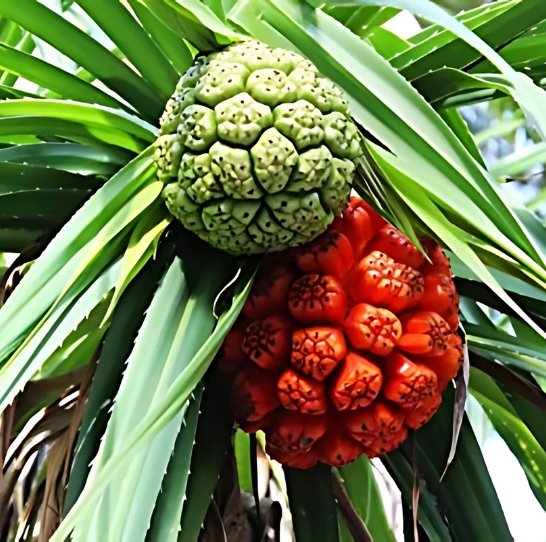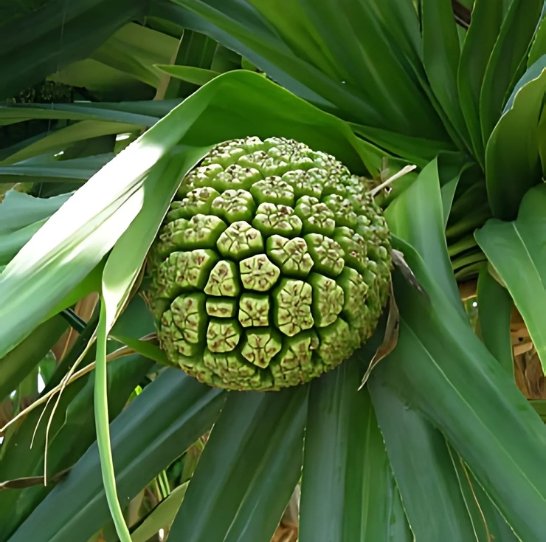
Ganjam Kewda Flower (Pandanus fascicularis) and its uses:
- Unique Fragrance:
- Known for its strong, pleasant odor due to the oils it produces.
- The fragrance is influenced by the sandy soil and climate of Ganjam, Odisha.
- Primarily used to flavor food, and its cultivation requires special skills.
- Characteristics of the Plant:
- DNA studies show the flower has consistent characteristics across the Ganjam region.
- The genetic makeup is stable, with no major differences between populations.
- Chromosomes and DNA content are uniform throughout the region.
- Description of the Plant:
- The plant has separate male and female plants.
- Male flowers are used for essential oil production, extracted during the flowering period.
- Male flowers last only about a day and are valued for their fragrance, which is used to make perfumes.
- Ecological and Economic Importance:
- The plant grows widely in the coastal areas of Ganjam, helping to protect soil and prevent erosion.
- It stabilizes sand dunes and serves as an important source of income for local farmers.
- Used in Handicrafts and Medicine:
- Leaves and roots are used to make local handicrafts such as bags, lamps, and baskets.
- Traditionally used in medicine for various remedies.


- Perfume Industry:
- Kewda attar (perfume oil) is a well-known product in India.
- Cultural and Religious Significance:
- The flower is mentioned in ancient Indian religious texts.
- Used in rituals and offerings to gods, with a long history in Indian culture.
- Valued especially for its use in perfumes and decorations.
- Historical Development:
- Oil extraction from Kewda flowers began in Ganjam in 1924.
- Small distilleries have since been set up to produce essential oils.
- Uses of the Kewda Flower:
- Perfumes: Male flowers are used to make popular perfumes like Kewda attar.
- Flavoring: The flower’s essence is used to flavor food and drinks.